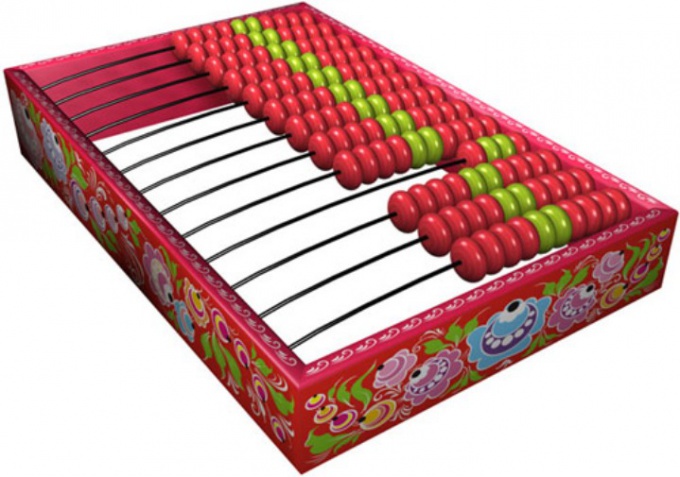Instruction
1
Abacus is a simple computing device, which is a countable ring, strung on thin spokes. Framed single canvas, scores encompass the entire system of numbers – units, tens, hundreds, etc. In the upper ranks account located integers, and their value reduced with each needle: from hundreds of thousands of units. A short series of "knuckles" located fractional numbers: from tenths to thousandths.
2
The simplest calculations in the accounts are addition and subtraction. Numbers starting with the first row of integers: from 1 to 10. Glad the next one spoke up) – from 11 to 20, etc. to Dial the required number by moving the "bones" of the corresponding row from right to left. When one row on the needle is filled, use the numbers more meaning – that is, one "knuckle" on the top row, replaces 10 "knuckles" lower. Folding number, add "bones" in the appropriate rows. To calculate the final result, "get down" bottom-up – millions, thousands, hundreds, etc.
3
The subtraction is made in the accounts in the same way as the addition, only in reverse order. That is, subtracting from one number to another, remove the "knuckle" of the respective series. Thus, during the count move from the top down. The final amount you will learn by counting the rings remaining in the left side of the account.
4
For each multiplication in the accounts are produced in different ways. If you need to multiply by 2 or 3, replace that action built "plusa" the number 2 or 3 times, respectively. Multiplying by 4 is the addition (2*2).
5
To multiply by 5, move all the bones score on one line upwards (that is, multiply it by 10, then divide the number in half in my mind.
6
To multiply a number by 6, it must be multiplied by 5 as described above, then to the result add the number that was in the beginning of the computation.
7
To multiply by 7, first multiply the number by 10 and then subtract the resulting values multiply the number three times.
8
Multiplying by 8, or 9 is replaced by a multiplication by 10, but without transferring 2 or 1 (by multiplying by 8 and 9 respectively) of the bone up.
9
Multipliers after 10, "decomposed" into components. For example, you need to multiply by 12 – you laid out the multiplier at 10 and 2. Add the number to itself (multiply by 2), then add to it redoubled value.
10
The division of accounts is a complex process and only available to professionals. In the old days you had to undergo special training in order to master division.
